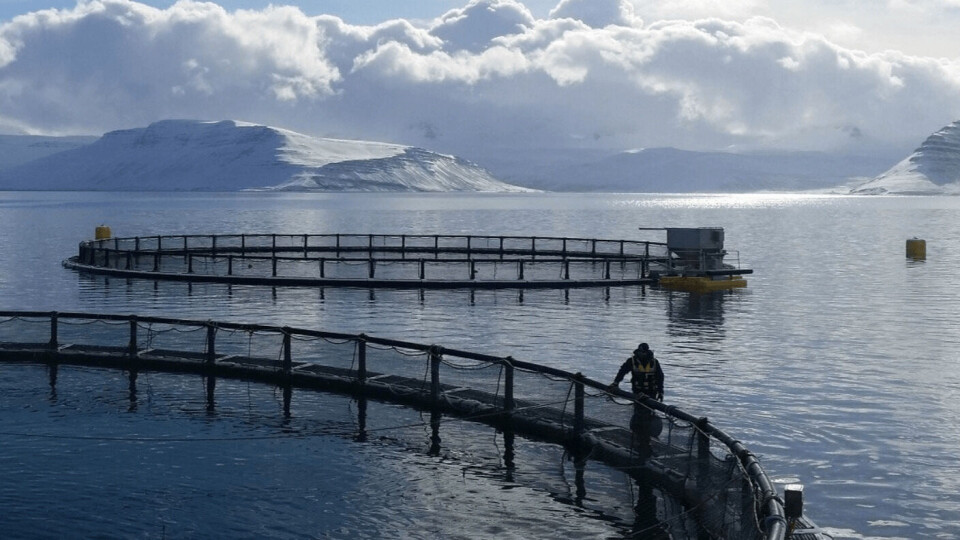
Farmed salmon now second most valuable fish in Iceland
Iceland’s export earnings from farmed salmon surpassed all caught fish except cod in January of this year, according to the Icelandic fisheries and fish farming statistics provider, Radarinn.is.
Salmon’s position in the league table is partly due to increasing production and partly to a shortage of capelin, which yielded the second highest export value of all fish species in the previous decade.
Cod remains king, but Radarinn expects farmed salmon to make the No.2 spot its own.
Salmon share will grow
“Cod in the sea off Iceland is the most valuable fish species that Icelanders catch, process and sell. It is head and shoulders above other species,” commented Radarinn.
“The capelin shortage of the last two years has meant that this ranking has not been on the table for the past two years.
“Now, on the other hand, the export of farmed salmon returns the second most valuable of all the fish species exported from Iceland. That is big news.
“And it is really hard to see anything other than that the share of salmon will grow even further in the coming years and that it will thereby establish itself thoroughly as the second most valuable fish.”
The export value of aquaculture products – including charr and rainbow trout - amounted to ISK 3.1 billion (£17.4 million) in January, the largest ever for the month. The increase over January 2020 amounted to 22% when counted in ISK and 10% when measured in foreign currency.
The export value of farmed salmon amounted to ISK 2.1bn. “It is clear from these figures that salmon and farmed fish are still on the move in increasing the economy’s foreign exchange earnings,” wrote Radarinn.
Iceland’s farmed fish production has increased significantly in recent years, and a record total of 40,600 tonnes was harvested last year, up 20% compared to 2019.
34,200 tonnes
“The increase can largely be attributed to salmon farming, which has gone from almost 1,100 tonnes in 2011 to just over 34,200 tonnes in 2020,” explained Radarinn.
“The increase was particularly large in 2019 when production doubled between years. In 2020, production increased by over 27% between years.
“There have also been some increases in charr farming in the last decade - about 5,500 tonnes were slaughtered in 2020 compared to 3,000 tonnes in 2010. However, there was a 13% decrease in charr slaughter in 2020 from the previous year.
“There was a considerable increase in the production of rainbow trout between 2019 and 2020, or by 64%. A total of 490 tonnes of rainbow trout were slaughtered in 2020, compared to 299 tonnes the year before. Production of rainbow trout peaked in 2017 when it was almost 4,500 tonnes, but since then, producers have increasingly turned to salmon farming.”
6% from on-land farms
Farmed salmon exports were worth ISK 20.5 billion (£11.8 million) in 2020, the second-highest figure after cod, which earned Iceland ISK 131.9bn. Salmon exports were worth more than those of haddock (ISK 19.7bn), mackerel (ISK 18.4bn), and herring (ISK 14.4bn).
Production of salmon in on-land farms amounted to 2,100 tonnes in 2020, about 6% of the total production of farmed salmon.
“This proportion has been steadily declining in recent years, partly due to the fact that the production costs of land-based farming are many times the cost of production from aquaculture,” reported Radarinn.
“In addition, the cost of investing in aquaculture is many times higher. Furthermore, research has shown that the carbon footprint of salmon farmed on land is higher than in sea cages. This difference is due to many factors, such as higher energy consumption, land use, farm life, to name a few.”






















































